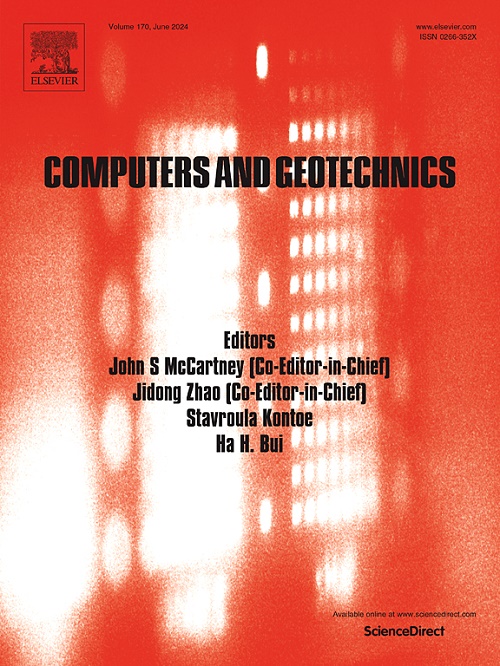Time-dependent modeling of supported drifts excavated in Callovo-Oxfordian claystone considering the excavation-induced fractured zone
IF 5.3
1区 工程技术
Q1 COMPUTER SCIENCE, INTERDISCIPLINARY APPLICATIONS
引用次数: 0
Abstract
Drifts have been excavated in Callovo-Oxfordian claystone to test the feasibility of deep geological disposal of radioactive waste. The time-dependent behavior of these structures has been observed to be significantly impacted by the development of excavation-induced fractured zones around the drifts. A numerical model is proposed to simulate the response of drifts excavated in various conditions and the obtained results are compared to in-situ data. This model is based on the explicit introduction of an anisotropic excavation-induced fractured zones following the extension observed in situ and the implementation of a visco-elasto-plastic model (CVISC) for the rock mass using the FLAC3D numerical code. The model reproduces the anisotropic distribution and evolution of the rock mass deformation, which tends to accumulate within the excavation-induced fractured zones. The influence of the extension of the fractured zone on the response is investigated through a sensitivity analysis. It shows that the variability of the measured convergence data can be reproduced by using fractured zone extensions that are consistent with the ones observed in situ. Also, various support scenarios are modeled. Flexible supports lead to low radial confinement levels, while stiffer supports provide greater confinement, significantly reducing the strain rates in the rock mass. The model is able to simulate multiple drift configurations and orientations using a simple approach and accurately reproduce the field observations. This suggests that this approach is a useful tool for designing tunnels excavated in COx claystone and for evaluating the long-term response.
求助全文
约1分钟内获得全文
求助全文
来源期刊

Computers and Geotechnics
地学-地球科学综合
CiteScore
9.10
自引率
15.10%
发文量
438
审稿时长
45 days
期刊介绍:
The use of computers is firmly established in geotechnical engineering and continues to grow rapidly in both engineering practice and academe. The development of advanced numerical techniques and constitutive modeling, in conjunction with rapid developments in computer hardware, enables problems to be tackled that were unthinkable even a few years ago. Computers and Geotechnics provides an up-to-date reference for engineers and researchers engaged in computer aided analysis and research in geotechnical engineering. The journal is intended for an expeditious dissemination of advanced computer applications across a broad range of geotechnical topics. Contributions on advances in numerical algorithms, computer implementation of new constitutive models and probabilistic methods are especially encouraged.
 求助内容:
求助内容: 应助结果提醒方式:
应助结果提醒方式:


